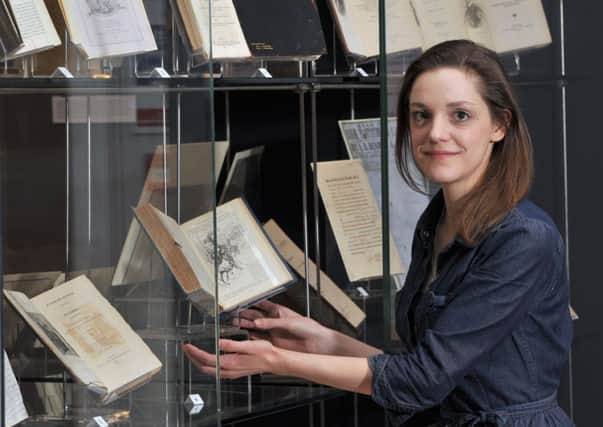Remembering Edinburgh Ladies Emancipation Society


And there, on the top of Salisbury Crags, they produced their trowels and began to hack at the lush, green turf.
It was hard work, messy work – not the sort of thing women of good standing were expected to be doing in Victorian Edinburgh. But soon their carved message was clear: Send The Money Back.
Advertisement
Hide AdAdvertisement
Hide AdThis was the Edinburgh Ladies Emancipation Society in action. Quakers, suffragists and emancipators, they wanted to make their feelings about the actions of the Free Church and its apparent support for slavery in America abundantly clear.
At their helm was Eliza Wigham, the president of the Society, and it is she who had invited Frederick Douglass a former American slave turned social reformer to Edinburgh to tell his story and join in on their daring moment of turf warfare. Wigham and the ELES is one story featured in the National Library of Scotland’s tribute to the 150th anniversary of the US Civil War, which ran from April 1861 to April 1865. It is a small slice of Edinburgh’s role in the nation-shaping event across the Pond, and includes letters by Abraham Lincoln, a diary of a Union soldier, a work by Glaswegian Allan Pinkerton on how he saved Lincoln’s life by thwarting an early assassination attempt and photographs by Alexander Gardner, who emigrated from Paisley to the States and became the war’s most celebrated photographer.
“There were so many connections between Scotland and the US at this time,” says exhibition curator Dora Petherbridge. “Obviously a lot of Scots emigrated to the US just before the war and there’s been a huge amount of publishing about the war ever since and we’ve been incredibly lucky to have had so many things connected to it donated to the library. There’s a lot of debate and curiosity about the war still, and there are some very strong feelings about it. It made sense to devote an exhibition to the event in this anniversary year.”
One of the most personal items on display is the pencil written diary of a Unionist soldier. “We sadly don’t know the name of the soldier,” says Dora. “It’s a real mystery but we were able to work out from what he wrote that he was a private and the battles he was involved in. He was possibly involved in the Peninsula campaign when the Union was trying to seize Richmond, the heart of the Confederate armies. And he writes of the retreat and how the rebels have pushed them back, it’s fascinating. He might have been of Scottish descent, there’s no real clue except the fact that it’s here.”
The exhibition also displays a piece of parchment dated, December 8, 1863, on which Abraham Lincoln has written agreeing the release of a Confederate soldier from a Union jail. “He’s agreeing that the soldier be discharged as he’s taken the Oath of Allegiance to the Union,” says Dora. “Prisons for the soldiers – on either side – were terrible places, full of vermin with little sanitation and food and no medicine.
“The letter was given to us by the family of Hugh Sharp who was a Dundee jute magnate who was fascinated with the US Civil War and bought a lot of things connected to it. When he died it was donated to us.”
As well as the war, the exhibition looks at the anti-slavery movement. The abolitionist campaign had begun in Scotland in the 1840s, says Dora, and those involved were often Quakers and others with a strong sense of morality. “There were active societies in Edinburgh and Glasgow who saw the cruelty of slavery and were against the profit being made out of it. Eliza Wigham was the president of the Edinburgh Ladies Emancipation Society and when the Free Church asked for money from the US to build churches here – receiving funds from slave states – she was horrified. She and the abolitionists viewed it as blood money, and started a campaign to get it sent back.”
Hence the hike up the Salisbury Crags. “There were lots of meetings and rallies and the ELES would invite people over from the US to give speeches about the reality of slavery and what could be done. They were quite something and have left a great legacy.”
• Yankee Cries and Rebel Yells is on at the National Library of Scotland, George IV Bridge, until March 22